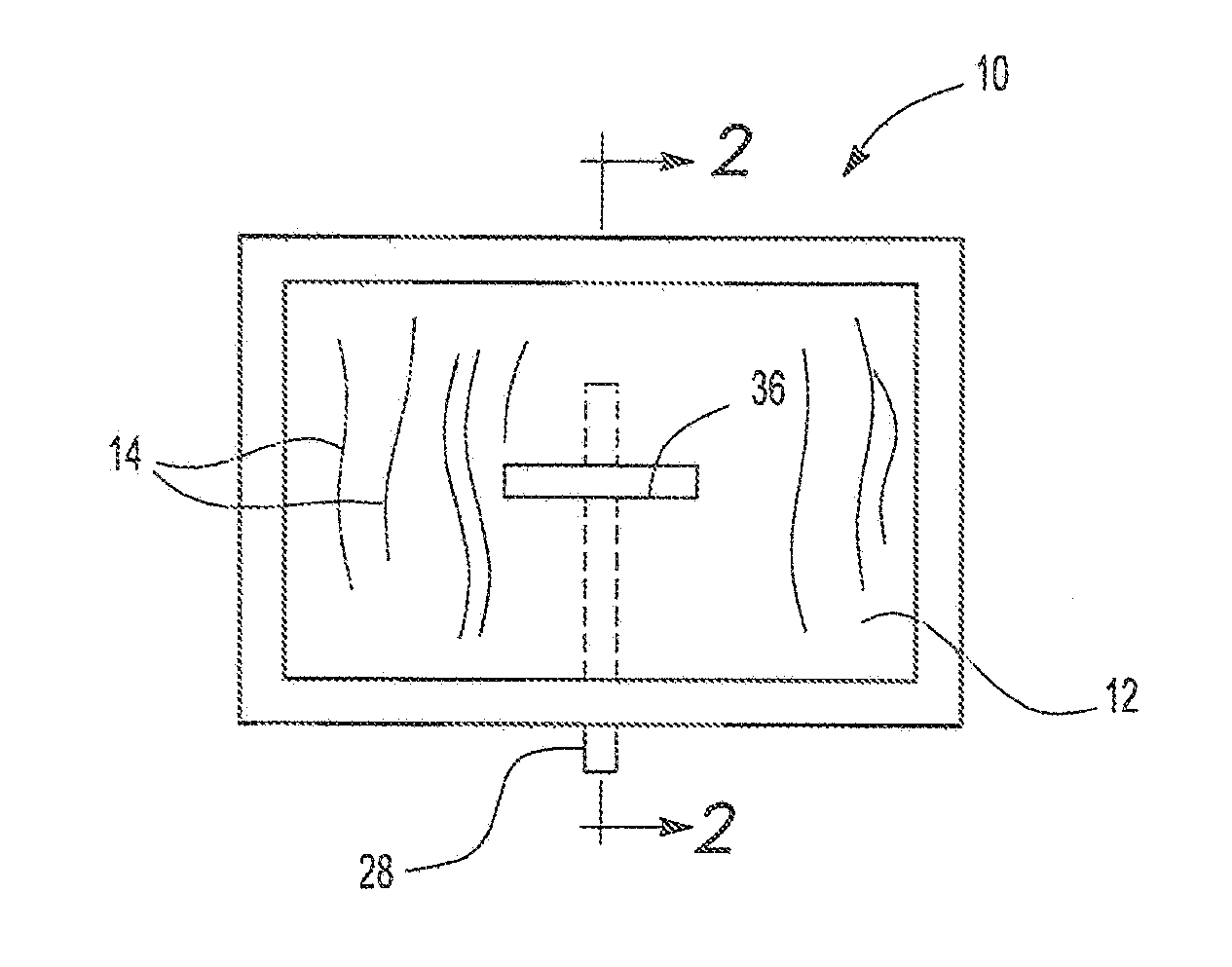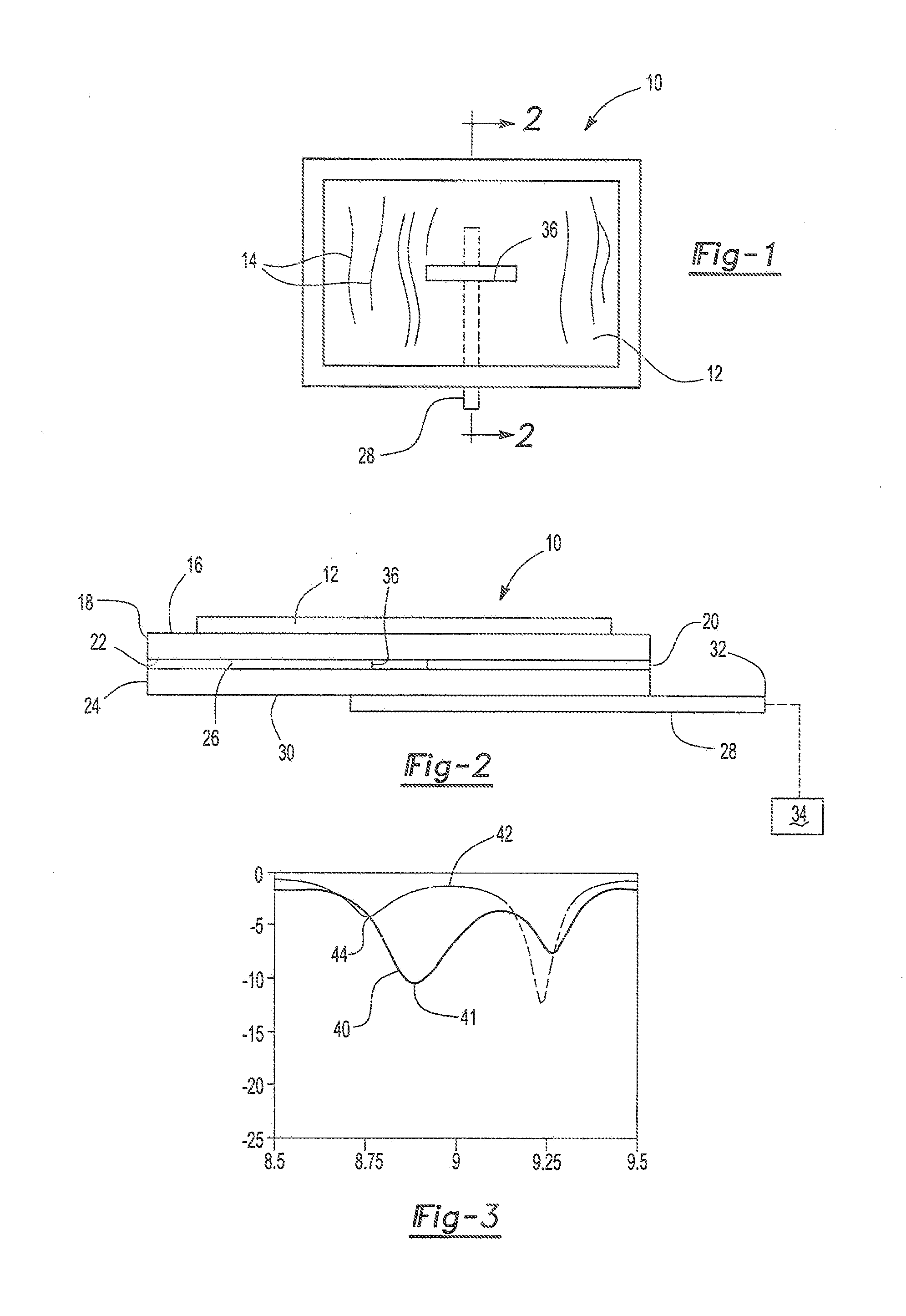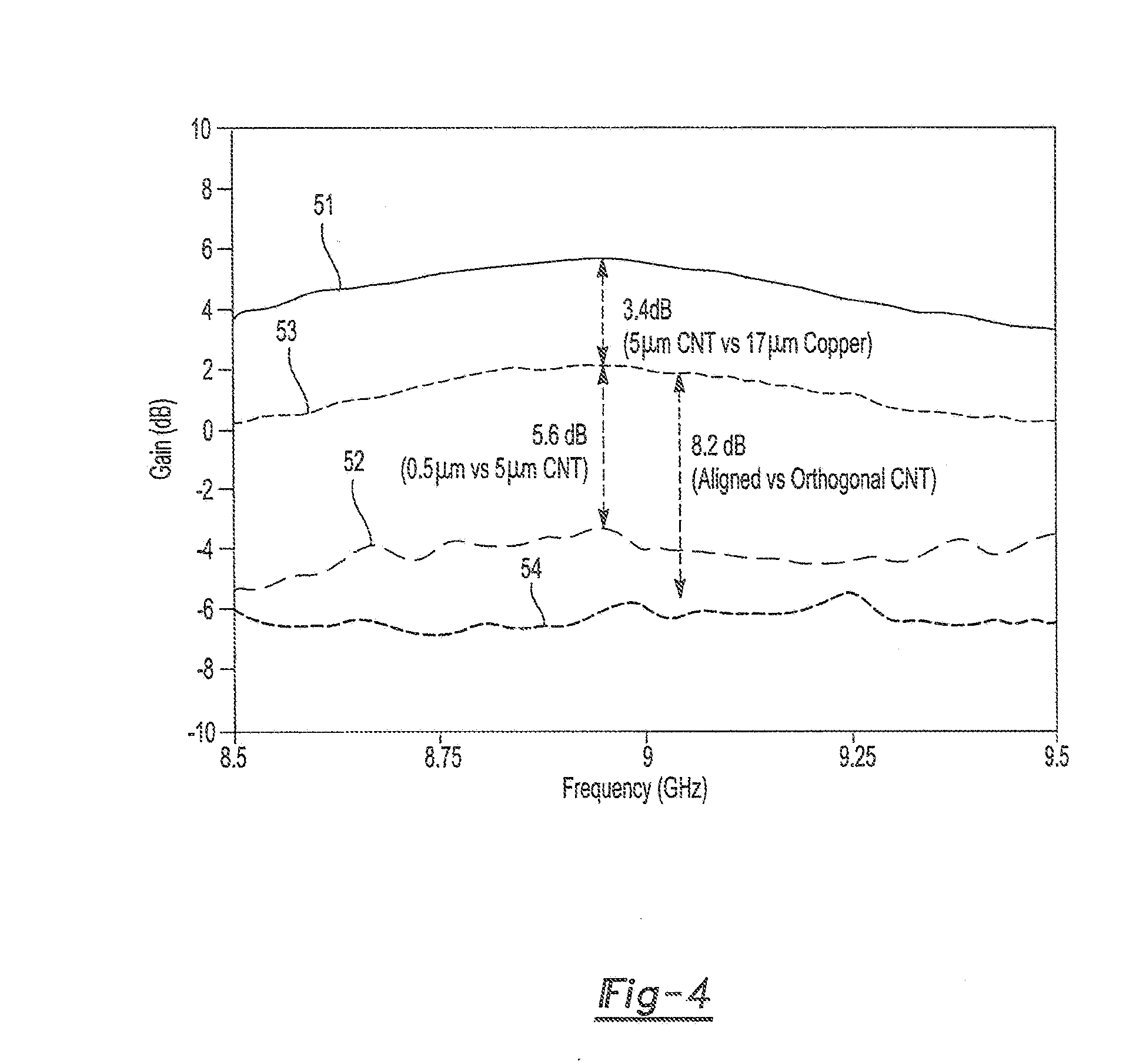Radio frequency anisotropic patch antenna and polarization selective surface
a radio frequency anisotropic patch and antenna technology, applied in the direction of antenna details, antennas, basic electric elements, etc., can solve the problems of rf antennas that cannot stand up to significant wear and tear, lack of polarization selectivity inherently built into the surface shape or material properties of standard conductive materials such as copper, and failure to meet significant wear and tear
- Summary
- Abstract
- Description
- Claims
- Application Information
AI Technical Summary
Benefits of technology
Problems solved by technology
Method used
Image
Examples
Embodiment Construction
[0022]With reference first to FIGS. 1 and 2, an RF patch antenna 10 according to the present invention is illustrated. The patch antenna 10 typically operates at relatively high frequencies, such as the X band, although other frequencies may be used without deviation from the spirit or scope of the invention. Furthermore, in microwave RF antenna systems, such as the X band, a single antenna may be formed by a series of patch antennas 10. The use of a plurality of patches allows steering of the RF system using conventional techniques, such as phase shifting of the signal provided to the various patch antennae.
[0023]The patch antenna 10 includes an upper patch 12 constructed of an anisotropic material. Preferably, the anisotropic material comprises carbon nanotube sheet material. Such CNT sheet material includes carbon nanotubes 14 which are aligned in substantially the same direction. Preferably, the patch 12 has a thickness, typically between 0.5 micrometers and 5 micrometers and ca...
PUM
 Login to View More
Login to View More Abstract
Description
Claims
Application Information
 Login to View More
Login to View More - R&D
- Intellectual Property
- Life Sciences
- Materials
- Tech Scout
- Unparalleled Data Quality
- Higher Quality Content
- 60% Fewer Hallucinations
Browse by: Latest US Patents, China's latest patents, Technical Efficacy Thesaurus, Application Domain, Technology Topic, Popular Technical Reports.
© 2025 PatSnap. All rights reserved.Legal|Privacy policy|Modern Slavery Act Transparency Statement|Sitemap|About US| Contact US: help@patsnap.com



